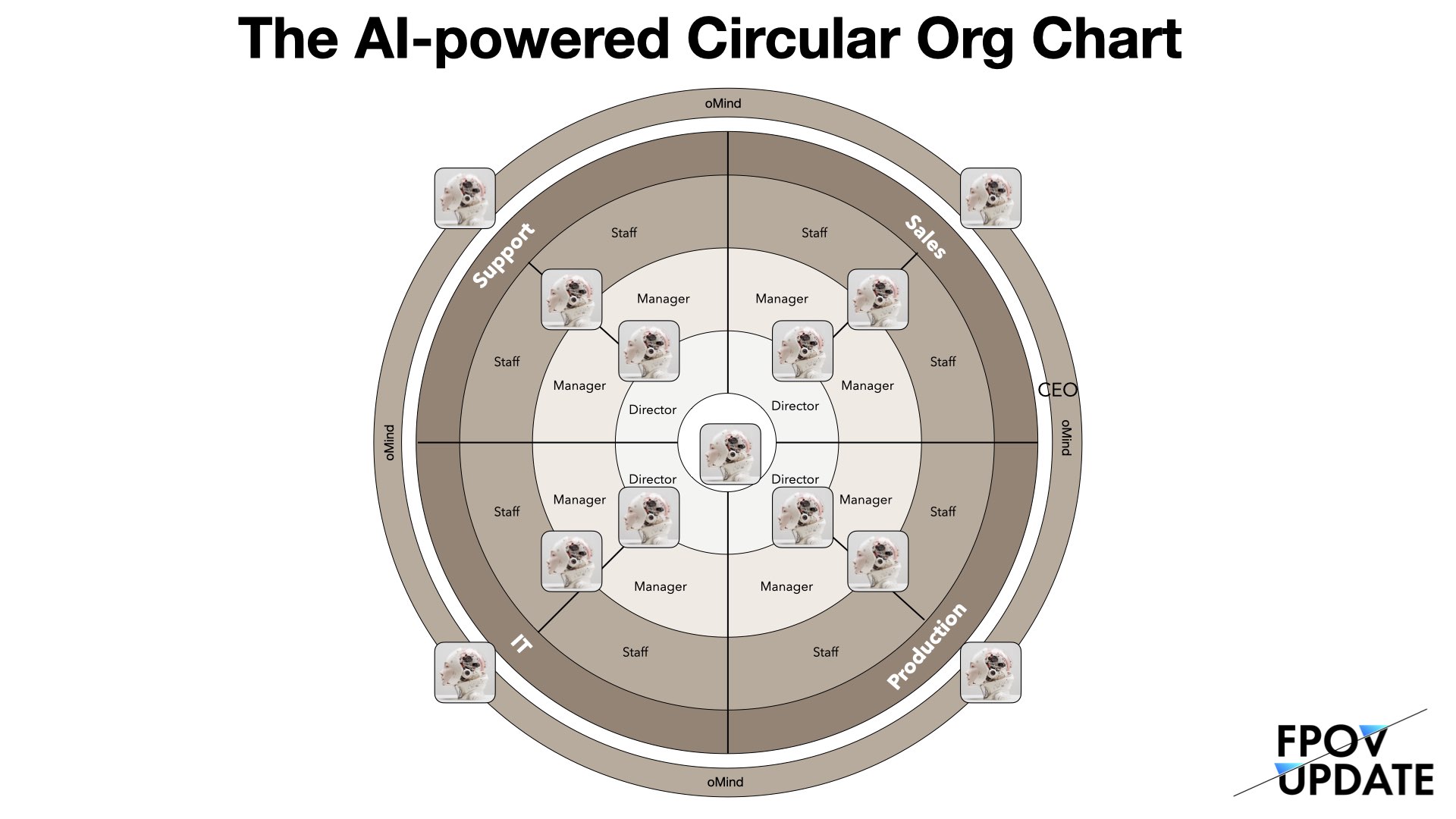How AI is Rewiring HR & Human Capital
At Future Point of View, we often talk about the necessity of keeping pace with the digital wave rather than being consumed by it. That message took center stage in our most recent Update, “The AI Transformation of HR and Human Capital,” led by FPOV founder Scott Klososky. What emerged from that session was more than an overview of AI’s role in the workplace. It was a blueprint for how HR leaders must reconceptualize their role and responsibilities in the age of artificial intelligence.
Organizations today must evaluate and manage two dominant forms of capital: human capital and digital capital. Human capital has always been regarded as the cornerstone of value within a company. But digital capital—the systems, tools, and AI capabilities embedded in workflows—is rapidly catching up in value. In some organizations, it may already be the most vital asset in terms of importance or competitive advantage.
Scott highlighted the need for leadership to intentionally measure and invest in both forms of capital. The organizations that win in the future will not necessarily be those with the most people or the best software. They will be those that master the integration of these two forces. That integration is what FPOV refers to as the intersection of Humalogy®: the thoughtful blending of humans and technology to create higher performance systems.
Signup for our Newsletter
Moving from Mobile First to AI First
Years ago, “mobile first” became the guiding principle for digital product design. Today, we are shifting toward an AI first mindset. While the concept is still evolving, here are five working definitions of what “AI first” could mean:
- Solving problems with AI before other options are considered
- Proving AI can’t do a job before hiring a human
- Prioritizing AI investments based on ROI
- Hiring based on AI proficiency
- Reorganizing teams to optimize AI output
Whether it’s solving a process problem, making a hiring decision, or allocating budget, leaders like Shopify CEO Tobias Lütke have already directed their teams to begin by asking: “Could this be solved more efficiently or accurately by AI?”
HR’s Expanding Role in the AI Age
As the influence of AI grows, leadership must adapt in kind. As presented in the recent Update, HR leadership may be the most critical to adapt. At FPOV, we see HR as one of the departments most affected—and most empowered—by AI transformation. In the least, the traditional view of HR as merely the steward of employee relations and compliance will not be sufficient.
During the Update, Scott Klososky introduced ten provocative ideas that could represent HR’s potential new trajectory.
- HR as AI Ethicist
HR may become responsible for ensuring fairness, transparency, and ethical guardrails in AI tools—especially those impacting hiring, evaluations, and promotions. Who better to define the moral boundaries of machine decision-making than those who understand people best?
- Consent Engineering
AI surveillance tools will become more common—from wearable health trackers to productivity monitoring software. HR will need to lead efforts to ensure employees understand and consent to these tools, balancing transparency and trust.
- AI-Powered Culture Engineering
Imagine HR using AI to pulse employee sentiment, analyze tone in communications, and nudge culture in real time. This isn’t science fiction. It’s a capability already emerging through continuous feedback tools and sentiment analytics.
- Dynamic, Value-Based Compensation
AI allows for the constant analysis of individual contributions. This opens the door to pay structures that reflect real-time value creation, not just tenure or job title. It’s performance-based pay 2.0.
- Personalized AI-powered Wellness Programs
As AI becomes more adept at understanding individual behavior, wellness initiatives can become highly personalized—tailored not just by department or demographic, but by the unique health and productivity patterns of each employee.
- Stimulative Career Pathing
Every employee could soon have an “AI career twin,” helping simulate future scenarios, guide development, and prepare for the next step. Think of it as personalized, predictive learning and development on demand.
- Navigating Labor Movements Around Automation
From dock workers to Hollywood writers, resistance to AI and automation is growing. HR must become more adept at navigating the complex relationships between human labor and digital labor—including union negotiations and collective pushback.
- Stewards of Humanness
As digital capital rises, HR must double down on preserving and championing human skills like empathy, collaboration, and ethical judgment. HR can be the force that ensures humanity doesn’t get lost in the machine.
- Biodigital Workforce Design
Tomorrow’s departments will be staffed by both humans and AI agents. HR has an opportunity to lead in designing these hybrid teams, optimizing for synergy rather than separation.
- Managing Human and Digital Workers
Some organizations are already merging HR and IT roles. The workforce now includes both human employees and AI agents. Managing both may soon become one function, requiring new skills and new structures.
Rethinking the Org Chart
To accommodate these shifts, organizational structures must evolve. The traditional hierarchical org chart no longer reflects how work happens in a hybrid human-AI environment. The concept of a “circular org chart,” inspired by Disney’s 1938 approach presents a potential solution. In this structure, the leader sits at the center and influence radiates outward. The model emphasizes holacracy and provides for a more cohesive integration of human and digital capital.

The Future of Human Capital is Centaur-Shaped
FPOV has long championed the concept of the digital centaur: a person who combines advanced human skills with strong digital capabilities. It’s already evident today that these characteristics are evident in the most valuable employees. They don’t just use AI—they partner with it. They co-pilot automation systems and bring uniquely human insight to machine-driven analysis.
As we shift more tasks to AI systems, we are not eliminating the need for people. We are elevating the value of their human contributions. The organizations that win will be those that cultivate more centaurs and fewer one-trick specialists.
Integration Over Bifurcation
The ultimate takeaway from the Update is this: it’s not about doubling down on human capital or digital capital. It’s about recognizing that the power lies in their integration. The degree will vary by organization, but there is no doubt Human Resources leaders will be seen as a linchpin in this integration effort. They will be tasked with developing human capital to embody the characteristics of digital centaurs. They must also shape digital policies and procedures that ensure both humans and technology will work harmoniously to drive performance.
The question is no longer “How will AI affect HR?” It’s “How will HR lead in the age of AI?”
If you’re not already asking that question, today is the day to start.
About The Author

Trent Saunders
Trent’s natural curiosity for emerging technology makes him a great addition to FPOV’s Business Development team. As Business Expansion Manager, Trent leverages his passion for pitching new concepts to evangelize the FPOV offerings. Learn more about Trent Saunders.

